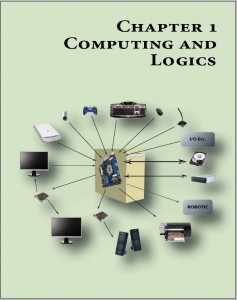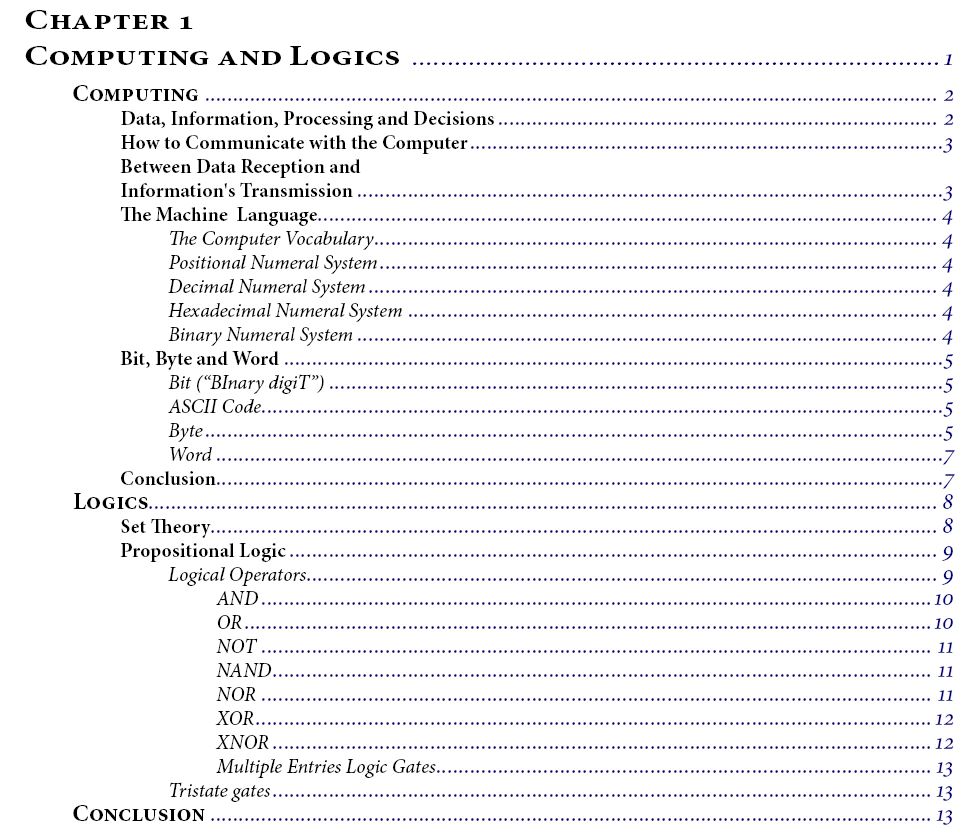Computing and Logics

We will start our journey through the computer roads trying to understand the main tasks that the CPU messengers have to perform, the vocabulary that they have to use and how, with such a simple and basic vocabulary, they form words to communicate with each other.
Once this done, we’ll try to understand how we humans found the mathematical philosophical abstraction that gave rise to the computing Science and enabled CPU messengers to perform all their tasks by simply turning on and off switches.
As a method of introduction to the main components of computing Science, we’ll use an analogy with the doorman of a nightclub, George, who collects data from the clients, performs procedures (runs programs) with it, thus obtaining the information he needs to take decisions. In order to do it correctly, he performed its job turning switches on as the conditions were met, until a light at the club entrance warned him that all procedures had been performed and that he could let the customers in.
George performed a conditional operation, i.e. if all the necessary conditions were to occur then he could let the customers in. And made it as the computer does, turning on and off switches.
We will also introduce as an analogy to computer assisted production, the behavior of a car parking door. With the appropriated devices the computer checks if certain conditions are fulfilled. As these conditions are or not met in programmed combinations, what the computer checks through the materialization of the mathematical abstractions we earlier mentioned, so the computer closes or not the electric circuit that opens the door without the human intervention. These analogies will be used during this Chapter development and in the analysis of the logical operators, each of them separately.
What is a positional numeral system? It’s a definition that includes both the base 10 (decimal) and the base 2 (binary) positional numeral systems. What’s a numbering Base? It’s the number of digits used to represent numbers in that Base. We’ll try to understand the basics of numbering in Base 10 or Decimal, and in Base 2 or Binary. The Binary Base, which uses two digits, 1 and 0, to represent numbers, is the perfect one to represent the state of a computer’s circuit: On and Off.
What is the bit, the basic unit of information, which can only take two values , 1 or 0, true or false. What is the Byte and why it has 8 bits? What is the Word?
We will talk about Mr. George Boole and its algebra, which he claimed to represent all mathematical operations with expressions that could only take one of two values: true or false. We will see how, one century later, this algebra became the basis of computing Science.
What is the propositional calculus? What is the predicate calculus? Don’t get scared by these names, because everything that we will discuss in this work starts on a simple and elementary basis, so that everyone can understand it, without the use of scaring names or, at least with those scaring names explained before pronounced.
We will introduce the Boolean logical operators NOT, OR and AND, trying to show how through its application we can buid Sets. We will use the Set theory and apply it to those initial analogies, comparing each obtained Set with the corresponding logical operator function, taking the opportunity to introduce the other operators of propositional logic: XOR , XNOR , NAND and NOR.
Finally, we will introduce the various possible representations of logical operators: logic gates, truth tables, and algebraic expressions.
It’s thus created the mathematical abstraction that puts the computer to run, because the logical circuits are formed by the combination of these logical gates, connecting with each other (outputs to inputs), thus obtaining sequences of logical operations that lead to the final result we want.
It’s the sum of simplicities getting complex.
See the global synopsis of this work
We introduce here the table of contents of the Paper Book to describe the themes approached in this Chapter

